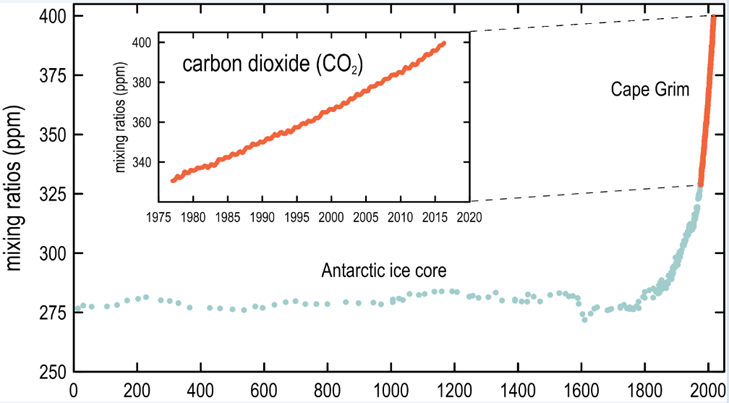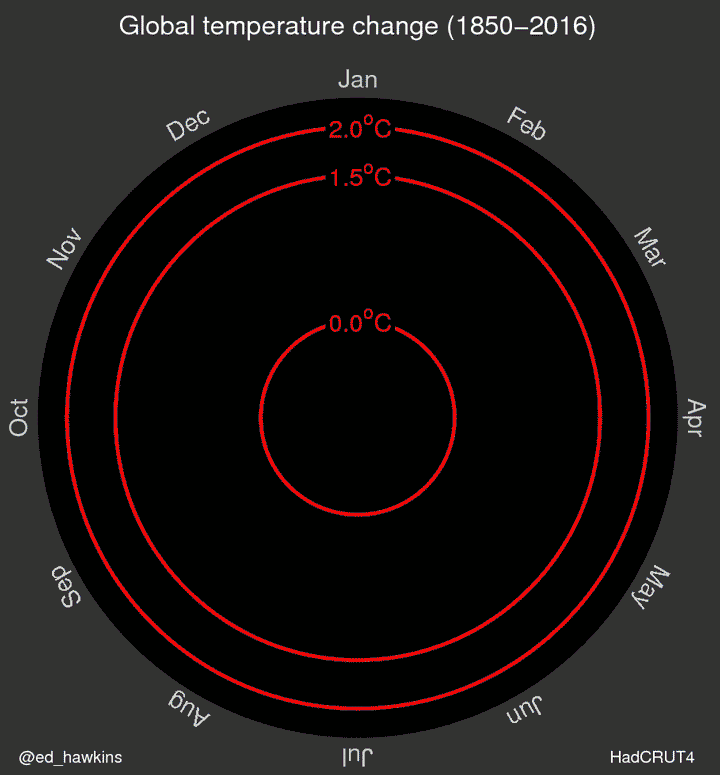The Earth’s atmosphere is likely to hit a dangerous milestone in the next few weeks, with researchers expecting the concentration of carbon dioxide will reach 400 parts per million (ppm) in the southern hemisphere.
A remote part of north-western Tasmania is likely to witness the first 400ppm baseline reading, at the Cape Grim monitoring site jointly run by CSIRO and the Bureau of Meteorology.
While the 400ppm milestone has been temporarily exceeded at two other stations since 2013 (in Hawaii and Alaska), Cape Grim’s readings are particularly significant because they are the most accurate in the southern hemisphere, and are less prone to seasonal fluctuations than the northern hemisphere sites.
And, once the Cape Grim reading reaches 400ppm, it’s unlikely to drop back down again.
CO2 levels have risen steadily over the past 2000 years, with the burning of fossil fuels and clearing of forests triggering an ongoing increase since about 1800:

CSIRO chart showing a steady increase in CO2 levels: atmospheric readings from the last 40 years, and ice core readings prior.
And rising CO2 levels have driven a steady increase in global temperatures – as shown in a new animation from climate scientist Ed Hawkins, illustrating how the world has warmed over the past 166 years:

The graphic shows the speed of global warming increasing sharply over the last decade, with the latest temperature data from March stopping dangerously close to the 1.5°C mark.
That’s the target 195 countries agreed to as a new aspirational global warming ceiling at the Paris climate talks last December – and one that looks certain to be breached.
As Climate Councillor Prof. Will Steffen noted on ABC Radio National this morning:
Preview Image Credit: Flickr User isnapshot licensed under CC BY-NC 2.0